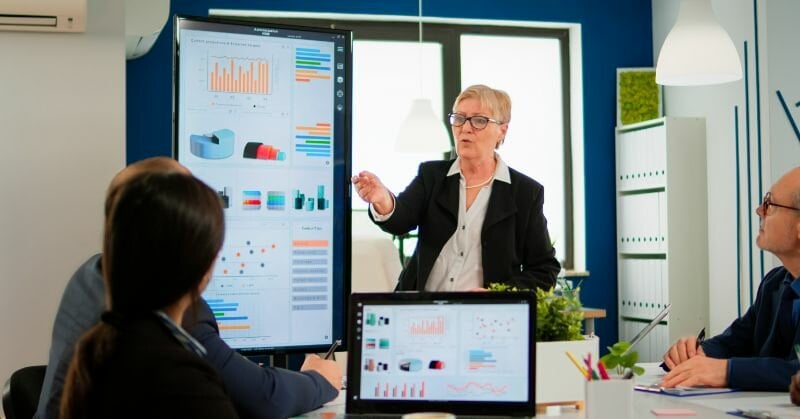Industrial manufacturing is undergoing rapid transformation, driven by emerging technologies. Smart, automated, and connected machinery is becoming the foundation for future-ready production systems, enabling greater efficiency, customization, and sustainability across various sectors.

1. The Evolution of Industrial Machinery: From Manual to Intelligent Systems
The journey of industrial machinery began with manually operated tools and mechanical systems. These rudimentary machines required substantial human labor and offered limited scalability. As the industrial revolution progressed, automation made its first leap with steam and electrical power.
Fast-forward to the 21st century, and machinery is now deeply integrated with software, sensors, and communication protocols. The emergence of Industry 4.0 has been a catalyst for this transformation, advocating a complete digital integration of machines, processes, and systems.
Table 1: Fastest Growing Industrial Tech by 2035
| Technology | Current Adoption (%) | Forecast by 2035 (%) | Estimated CAGR (%) |
|---|---|---|---|
| Digital Twin | 18% | 67% | 13.4% |
| Industrial AI | 25% | 74% | 11.8% |
| IIoT Systems | 32% | 82% | 10.1% |
| Advanced Materials | 15% | 60% | 12.5% |
| 3D Printing | 20% | 69% | 11.3% |
2. Robotics and Automation: Increasing Efficiency and Reducing Downtime
Collaborative robots (cobots) are engineered to safely work alongside humans without safety cages. These cobots adapt to changes in production lines, making them ideal for flexible, small-batch manufacturing.
Companies such as ABB and Fanuc have pioneered robotic arms that can handle precision assembly, welding, and packaging with minimal error.
3. Artificial Intelligence in Manufacturing Machinery
Predictive maintenance and machine vision are revolutionizing manufacturing. Platforms like Siemens’ MindSphere demonstrate how AI can monitor, control, and optimize entire machine fleets.
4. Industrial Internet of Things (IIoT): Connectivity for Smarter Operations
With embedded sensors, industrial machines can now send data to central platforms in real-time. Companies like Rockwell Automation are leading in creating smart factory platforms for seamless coordination and optimization.
5. Additive Manufacturing and 3D Printing Integration
Industrial-grade 3D printers are used for end-use parts in aerospace, automotive, and biomedical sectors. 3D printing enables mass customization, quick part replacement, and agile manufacturing practices.
6. Digital Twin Technology: Simulating Before Manufacturing
Digital twins simulate real-world conditions to test performance, identify weaknesses, and optimize configurations. Manufacturers like GE and Siemens employ them extensively to reduce time and cost in development.
7. Advanced Materials and Smart Components
New alloys, carbon fiber composites, and self-healing polymers extend the lifespan of machinery while reducing energy consumption. Smart materials embedded with sensors allow machines to adapt to their environments.
8. Cybersecurity for Connected Machinery
Cyberattacks targeting operational technology (OT) systems can lead to severe disruptions. Encryption, zero-trust architectures, and unified IT-OT security frameworks are now standard across industrial systems.
9. Machine Learning-Augmented Systems: Real-Time Adaptation and Optimization
Machine learning (ML) is turning industrial machines into adaptive, self-optimizing systems. By analyzing sensor data, ML can adjust operations in real time—for example, modifying CNC cutting speeds based on detected patterns.
Reinforcement learning is being applied to robotic path optimization and material handling. These techniques allow machines to learn best practices through trial and error in simulations.
10. Augmented Reality (AR) and Virtual Reality (VR): Enhancing Human-Machine Interaction
AR allows technicians to see diagnostics and repair steps overlaid on physical equipment using smart glasses. VR enables immersive training and design validation before physical machines are built.
Companies like PTC and Microsoft are creating AR/VR platforms for remote support and operator training, bridging the gap between automation and human expertise.
Table 2: Comparison of Leading Smart Machinery Technologies
| Technology | Core Function | Application Example | Leading Company |
|---|---|---|---|
| Collaborative Robots | Human-machine collaboration | Automotive assembly | Universal Robots |
| AI Quality Control | Defect detection & predictive maintenance | Electronics manufacturing | IBM Watson AI |
| IIoT Sensors | Real-time monitoring & feedback | Smart factory environments | Rockwell Automation |
| Digital Twin | Simulation and optimization | Lifecycle management | Siemens |
Frequently Asked Questions (FAQ)
Q1: Will AI replace machine operators in the future?
A1: No. AI enhances human capabilities by handling repetitive or data-intensive tasks. Operators are still essential for oversight, troubleshooting, and creative problem-solving.
Q2: Is digital twin technology suitable for small and medium enterprises (SMEs)?
A2: Yes. Scalable and modular digital twin platforms are now available, allowing SMEs to implement them cost-effectively for specific machinery or processes.
Q3: What are the biggest challenges in adopting these new technologies?
A3: Key challenges include the cost of implementation, need for workforce reskilling, data integration complexity, and ensuring cybersecurity.
Q4: Can 3D printing fully replace traditional machining?
A4: Not entirely. While 3D printing excels at custom and complex parts, traditional machining remains more efficient for mass production and simpler components.
Conclusion
The transformation of industrial machinery is more than mechanical—it's increasingly intelligent and immersive. By integrating machine learning, AR/VR, and other digital innovations, manufacturing systems are evolving into ecosystems of adaptability, human-centric design, and resilience. Companies that leverage these technologies not only improve productivity but also empower their workforce and enhance long-term sustainability.




